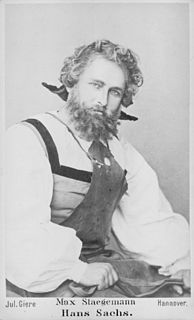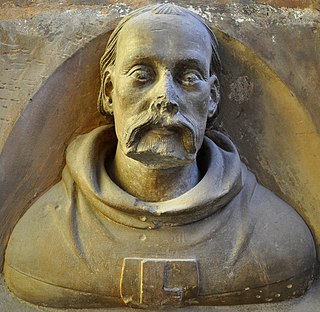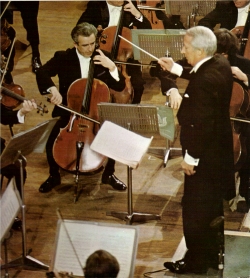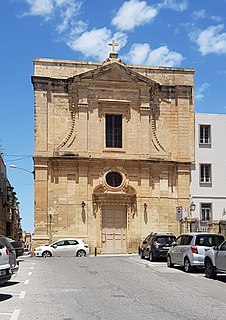
Magdeburg is the capital and second-largest city of the German state of Saxony-Anhalt. It is situated on the Elbe River.

Nuremberg is the second-largest city of the German federal state of Bavaria after its capital Munich, and its 511,628 (2016) inhabitants make it the 14th-largest city in Germany. On the Pegnitz River and the Rhine–Main–Danube Canal, it lies in the Bavarian administrative region of Middle Franconia, and is the largest city and the unofficial capital of Franconia. Nuremberg forms a continuous conurbation with the neighbouring cities of Fürth, Erlangen and Schwabach with a total population of 798,867 (2018), while the larger Nuremberg Metropolitan Region has approximately 3.6 million inhabitants. The city lies about 170 kilometres (110 mi) north of Munich. It is the largest city in the East Franconian dialect area, Nuremberg was one of the host cities of the 2006 FIFA World Cup.

Die Meistersinger von Nürnberg, WWV 96, is a music drama in three acts, written and composed by Richard Wagner. It is among the longest operas commonly performed, usually taking around four and a half hours. It was first performed at the National Theatre Munich, today the home of the Bavarian State Opera, in Munich, on 21 June 1868. The conductor at the premiere was Hans von Bülow.

Hans Suess, known as Hans von Kulmbach, was a German artist. He was born around 1480 in Kulmbach, Franconia and died prior to 3 December 1522 in Nuremberg. Hans von Kulmbach was the artist who created the Kraków St John's Altar.

Polotsk is a historical city in Belarus, situated on the Dvina River. It is the center of the Polotsk District in Vitsebsk Voblast. Its population is more than 80,000 people. It is served by Polotsk Airport and during the Cold War was home to Borovitsy air base.

Hans Sachs was a German Meistersinger ("mastersinger"), poet, playwright, and shoemaker.

Kamenz is a town in the district of Bautzen in Saxony, Germany. Until 2008 it was the administrative seat of Kamenz District. The town is known as the birthplace of the philosopher and poet Gotthold Ephraim Lessing and the criminal, Bruno Hauptmann. It lies north-east of the major city of Dresden.

A Meistersinger was a member of a German guild for lyric poetry, composition and unaccompanied art song of the 14th, 15th and 16th centuries. The Meistersingers were drawn from middle class males for the most part.

Peter Parler was a German-Bohemian architect and sculptor from the Parler family of master builders. Along with his father, Heinrich Parler, he is one of the most prominent and influential craftsmen of the Middle Ages. Born and apprenticed in the town of Schwäbisch Gmünd, Peter worked at several important late Medieval building sites, including Strasbourg, Cologne, and Nuremberg. After 1356 he lived in Prague, capital of the Kingdom of Bohemia and seat of the Holy Roman Empire, where he created his most famous works: St. Vitus Cathedral and the Charles Bridge.

Hans Folz was a German author of the late medieval or early Renaissance period.

The Basilica of San Domenico is one of the major churches in Bologna, Italy. The remains of Saint Dominic, founder of the Order of Preachers (Dominicans), are buried inside the exquisite shrine Arca di San Domenico, made by Nicola Pisano and his workshop, Arnolfo di Cambio and with later additions by Niccolò dell'Arca and the young Michelangelo.

Cockaigne , Op. 40, also known as the Cockaigne Overture, is a concert overture for full orchestra written by the British composer Edward Elgar in 1900–1901.

St. Catherine's Church is the largest Protestant church in Frankfurt am Main, Germany. It is a parish church in the old city centre near one of the most famous city squares, the Hauptwache. The church is dedicated to the martyred early Christian saint Catherine of Alexandria.
Dorothea of Brandenburg was a princess of Brandenburg by birth and by marriage Duchess of Mecklenburg.

Saint Cyriakus is a medieval church in Gernrode, Saxony-Anhalt, Germany. It is one of the few surviving examples of Ottonian architecture, built in 959/960-965 by Margrave Gero, although it was restored in the 19th century. From its foundation until 1614 Saint Cyriakus was the collegiate church of the abbey of Gernrode, also founded by Margrave Gero. The church and the abbey became Protestant in the mid-sixteenth century, and the church is now used by the Protestant community of Gernrode.

The Master of Nuremberg is a 1927 German silent historical comedy film directed by Ludwig Berger and starring Rudolf Rittner, Max Gülstorff and Gustav Fröhlich. It is based on the 1868 opera Die Meistersinger von Nürnberg by Richard Wagner. It was considered artistically unsuccessful because of its overly theatrical presentation. It is also known by the alternative title The Meistersinger.

The Church of St Mary Magdalene is a Roman Catholic church building in Valletta, Malta. The church was part of the Magdalene asylum situated adjacent to the church. The church was deconsecrated in the mid 20th century and was blessed again by Bishop Charles Scicluna on 25 February 2015.

St. Augustine's Monastery in Erfurt in central Germany, is a former church and monastery complex dating from the 13th century. The site is almost one hectare in size. It was built by Augustinian monks, an order of the Catholic Church. It is most well known as the former home of Martin Luther (1483-1546), the father of the Reformation, who lived there as a monk from 1505 until 1511.

Haller von Hallerstein is a noble patrician family from the Free Imperial City of Nuremberg which belonged to the wealthy ruling oligarchy during Nuremberg's Golden Age in late Middle Ages and the Renaissance.

The bombing of Nuremberg was a series of air raids carried out by allied forces of the Royal Air Force (RAF) and the United States Army Air Forces (USAAF) that caused heavy damage throughout the city from 1940 through 1945.





















